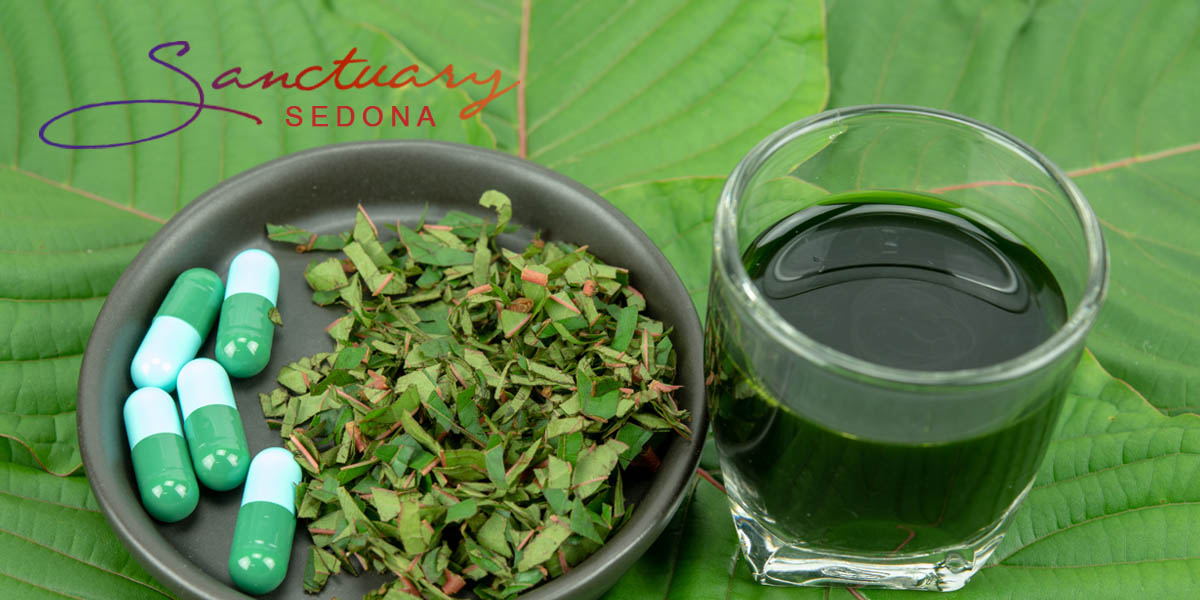Kratom is a substance derived from the leaf of a Southeast Asian tree that has opioid-like effects. People take it to relax or elevate their mood and energy. Many people even use it to ease withdrawals from heroin or prescription opioids.
Kratom is marketed as natural and safe. And it is true that it was traditionally used in its natural form in its countries of origin. But because it’s growing in popularity and is now a commercial product, kratom’s quality is highly questionable. And because it’s an unregulated substance, it can contain harmful ingredients and unknown additives.
Kratom is also purported to be non-addictive. But the truth is that it contains opioid compounds, and therefore has a similar addiction potential to opioids. That’s why at The Sanctuary, we’ve seen a recent rise in the number of clients coming to us for help with their kratom addiction.
Symptoms of Kratom Withdrawal
Kratom doesn’t just have similar effects to opioids – it also has similar withdrawal symptoms. One former Sanctuary client describes how her dependence developed:
“I became completely dependent on this. It was to the point where I was unable to get out of bed in the morning without having kratom. If I didn’t dose myself every several hours with the kratom, I would get severe body aches, cold sweats, and shakes. I looked, for all intents and purposes, like someone withdrawing from heroin. That was extremely uncomfortable.”
The most common symptoms of this process are muscle aches, fatigue, tremors, and intense cravings. Other symptoms of kratom withdrawal include:
- Extreme irritability and mood swings
- Anxiety
- Depression
- Insomnia
- Nausea
- Diarrhea
- Impaired coordination
- Blurry vision
… and more.
Even if your symptoms don’t pose a risk of long-term physical consequences, the extreme discomfort they cause can deter you from staying sober. That’s why many people genuinely intend to stop using but find themselves reluctantly going back to kratom. The physical and psychological pain of withdrawals is just too much. Our former client recalls her experience with this:
“I couldn’t get off of it by myself. The withdrawal symptoms were so intense. I tried several times on my own to just stop using it. And it was completely unbearable… physically and emotionally.”
Timeline
Withdrawal from kratom generally starts within 12 to 48 hours of the last use. This varies depending on the size of your last dose. Symptoms typically last for a few days but can persist for up to 10 in some cases. How long they last depends on your length, frequency, and amount of use.
Severity
The severity of your withdrawals also depends on your dosage and duration of use. That is, those who use kratom heavily (i.e. large doses, multiple times a day) are likely to experience more acute symptoms.
Because its use began in SE Asia, the first studies on kratom took place in Malaysia. One study on the psychological withdrawal symptoms of kratom found that “Those who consumed higher quantities of kratom tea daily […] had higher odds of reporting longer duration of kratom use history […] higher frequency of daily kratom […] and were more likely to experience moderate symptoms of depression […] during kratom cessation than those who consumed between one and three glasses of kratom tea per day.”
Post-acute Withdrawal Symptoms
Some people recovering from kratom misuse go through post-acute withdrawal syndrome (PAWS). PAWS is a set of symptoms following the withdrawal period that can include brain fog, insomnia, depression, anxiety, and other effects. At The Sanctuary, we offer IV drip therapies to help you recover more quickly from post-acute withdrawal symptoms and get the most out of your time in rehab.
Learn more about this in our article, “Can NAD+ Reduce Addiction Withdrawal Symptoms?”
Using Kratom to Taper off Opioids
Kratom was initially promoted as a safe way to wean off opioids. But this has since been proven ineffective. In fact, some clinicians who use medication-assisted treatment (MAT) treat kratom withdrawals using prescription opioids.
Furthermore, using kratom, for this reason, can further complicate the picture, both in terms of quitting kratom and quitting opioids. People who use kratom to manage chronic pain or opioid use are at increased risk of developing dependency. And when they stop using it, their withdrawal symptoms can be more severe.
Using kratom to stop opioid use can also put you at risk of relapse into opioid addiction. It’s also important to note that opioid relapse increases your risk of overdose, as your tolerance level will have changed along with your decreased use. As another program graduate of The Sanctuary says:
“It’s a vicious, vicious cycle. If you’re getting off opiates, know that it’s a short-term fix and you’re still going to have to go through withdrawals from this.”
Do I Need Detox?
Speaking with a treatment professional can help you determine whether or not detox is necessary before you begin kratom addiction treatment. At The Sanctuary, our admissions coordinator is happy to walk you through an initial assessment to see if this is right for you. If you do require detox, you can do so through a partnered detox center here in Sedona before arriving at our campus. Or, you may elect to attend a detox center of your choice near your home, in the Sedona area, or elsewhere. Our team can provide referrals and resources, and help arrange the logistics of your travel and transfer. This may include a sober companion to accompany you on your journey. Whatever your unique situation, we’re here to make sure you arrive here as safely and smoothly as possible.
Remember that detox is just the first step. The real healing begins when you start to look into the issues underlying your kratom addiction – and make the changes that last a lifetime.
“I sought the help of an addiction treatment program. I had to do a full week of detox and I got off of it for a minute. But it just took away my coping mechanism and I wasn’t replacing it with anything. So it wasn’t long before I relapsed and started using it again. And I did that for another year or two before I found The Sanctuary. When I came out here, they helped me to get clean and also to replace what kratom was doing for me with other, more helpful coping strategies.”
Holistic Kratom Addiction Treatment at The Sanctuary
The Sanctuary’s holistic addiction treatment program starts by helping you find relief from kratom withdrawal symptoms and eventually regain your sense of calm. From there, you’ll work through a program of deep inner healing, guided every step of the way by our phenomenal team of medical doctors, clinical therapists, complementary health counselors, and support staff. Eventually, you’ll learn to change your relationship with yourself, with others, and with the world around you.
Learn how you can take the first step towards a life free of kratom and full of what you truly desire: contact us today.

Dr. Forrest is a licensed Naturopathic Physician specializing in retreat-style holistic medicine, natural detoxification and cleansing, mind/body medicine, and regenerative medicine. Dr. Forrest brings to his work a sense of humility, respect, and compassion that is too often absent in the sterile, rigid world of modern medicine. He is deeply honored and grateful to be continuing this work as part of the community and healing that is taking place at the Sanctuary. [email protected]

